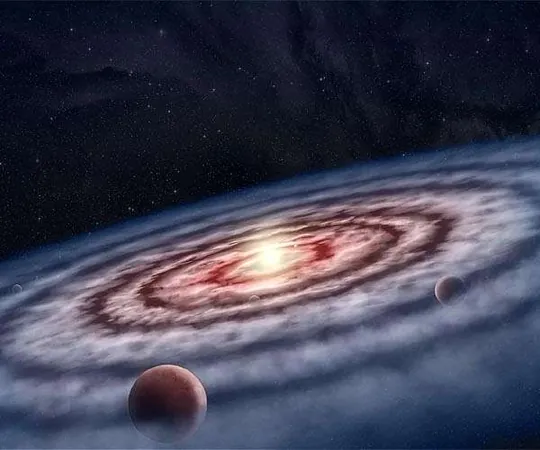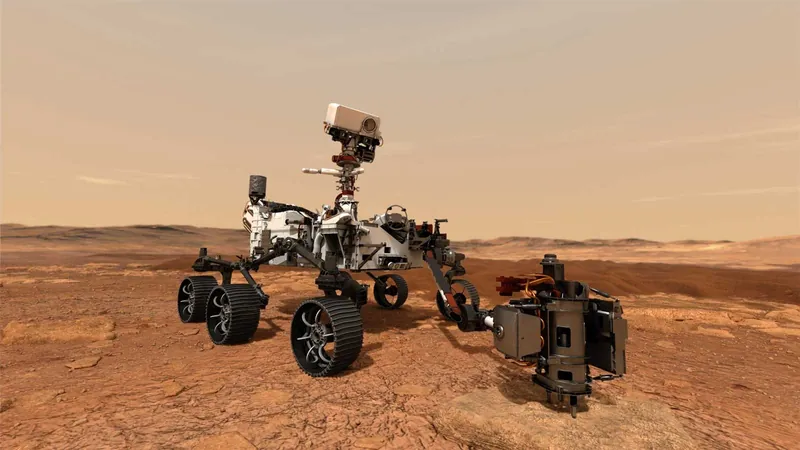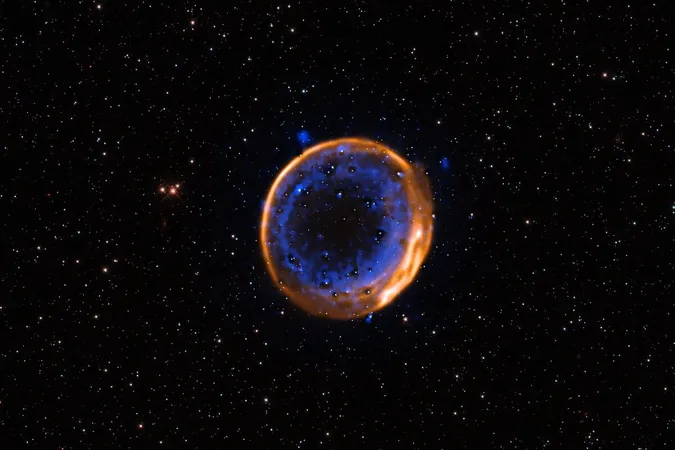
Unlocking the Secrets of Gas Disks: How They Shape Planet Formation Over Millions of Years
2025-06-16
Author: Jacob
Astronomers Reveal Groundbreaking Insights into Planet-Forming Gas Disks
An international team of astronomers has made significant strides in understanding the life cycles of gas and dust disks that give birth to planets, thanks to advanced observations from the Atacama Large Millimeter/submillimeter Array (ALMA). This groundbreaking research, published in a special issue of The Astrophysical Journal, stems from the ambitious AGE-PRO project (ALMA Survey of Gas Evolution of PROtoplanetary Disks).
AGE-PRO Study: A Deep Dive into Disk Evolution
The AGE-PRO initiative focused on 30 disks orbiting Sun-like stars, meticulously measuring their gas content during different evolutionary phases. Key findings revealed a surprising twist: the gas and dust within these disks dissipate at different rates. Principal Investigator Ke Zhang from the University of Wisconsin-Madison stated, "AGE-PRO provides the first systematic measurements of gas disk masses and sizes across the lifetime of planet-forming disks."
The Lifespan of Protoplanetary Disks: A Million-Year Journey
These protoplanetary disks can linger for several million years surrounding young stars, with their gas and dust content crucially influencing the types of planets that develop and their subsequent evolution. Characteristics such as mass, size, and angular momentum serve as the blueprint for future planetary systems.
ALMA's High-Resolution Observations Unveil Hidden Molecules
ALMA's cutting-edge capabilities allowed researchers to detect faint molecular signals within these disks. The AGE-PRO survey concentrated on systems aged between one and five million years in regions like Ophiuchus, Lupus, and Upper Scorpius. This extensive research laid down a vital dataset for future inquiries into planet formation.
A Surprising Discovery: Gas Outlasts Dust in Aging Disks
The study's findings showed that gas tends to outlast dust as the disks age, leading to a dynamic shift in the gas-to-dust mass ratio. "The most surprising finding is that while many disks fade after a few million years, those that endure surprisingly retain more gas than we expected," noted Zhang, altering our comprehension of how and when planets acquire their atmospheres.
Collaboration is Key: Chilean Researchers Make Major Contributions
Notably, researchers from Chilean institutions, including the University of Chile and the Center for Astrophysics and Associated Technologies (CATA), played a vital role in this study. Laura Perez highlighted the importance of these findings, stating, "Until now, most knowledge about disk evolution was based on solids. With AGE-PRO, we have direct, consistent measurements of how gas evolves throughout the disk's lifespan—crucial for understanding giant planet formation."
Discovering New Planets: Unveiling Candidates with Gravitational Signatures
Postdoctoral researcher Carolina Agurto uncovered evidence that longer-lived disks maintain more gas than previously predicted, while Anibal Sierra focused on a luminous disk known as 2MASS J16120668-3010270, where he detected two candidate forming planets, including one suggested via gravitational signatures. Future observations from the James Webb Space Telescope (JWST) are expected to confirm the existence of these worlds.
Empowering Future Generations: Young Chilean Scientists Also Contribute
Chilean students also made significant contributions: Benjamin Cabrera evaluated stellar masses, José Mondaca investigated the youngest disks, and Camila Pulgares examined dust evolution across the entire sample.
Science as a Collaborative Effort: A Shared Journey of Discovery
Co-Principal Investigator Ilaria Pascucci from the University of Arizona emphasized the collaborative spirit of science, stating, "The advancement of science is a truly collaborative endeavor, driven by people from diverse backgrounds, each bringing their unique perspective to expand the horizons of discovery."









 Brasil (PT)
Brasil (PT)
 Canada (EN)
Canada (EN)
 Chile (ES)
Chile (ES)
 Česko (CS)
Česko (CS)
 대한민국 (KO)
대한민국 (KO)
 España (ES)
España (ES)
 France (FR)
France (FR)
 Hong Kong (EN)
Hong Kong (EN)
 Italia (IT)
Italia (IT)
 日本 (JA)
日本 (JA)
 Magyarország (HU)
Magyarország (HU)
 Norge (NO)
Norge (NO)
 Polska (PL)
Polska (PL)
 Schweiz (DE)
Schweiz (DE)
 Singapore (EN)
Singapore (EN)
 Sverige (SV)
Sverige (SV)
 Suomi (FI)
Suomi (FI)
 Türkiye (TR)
Türkiye (TR)
 الإمارات العربية المتحدة (AR)
الإمارات العربية المتحدة (AR)